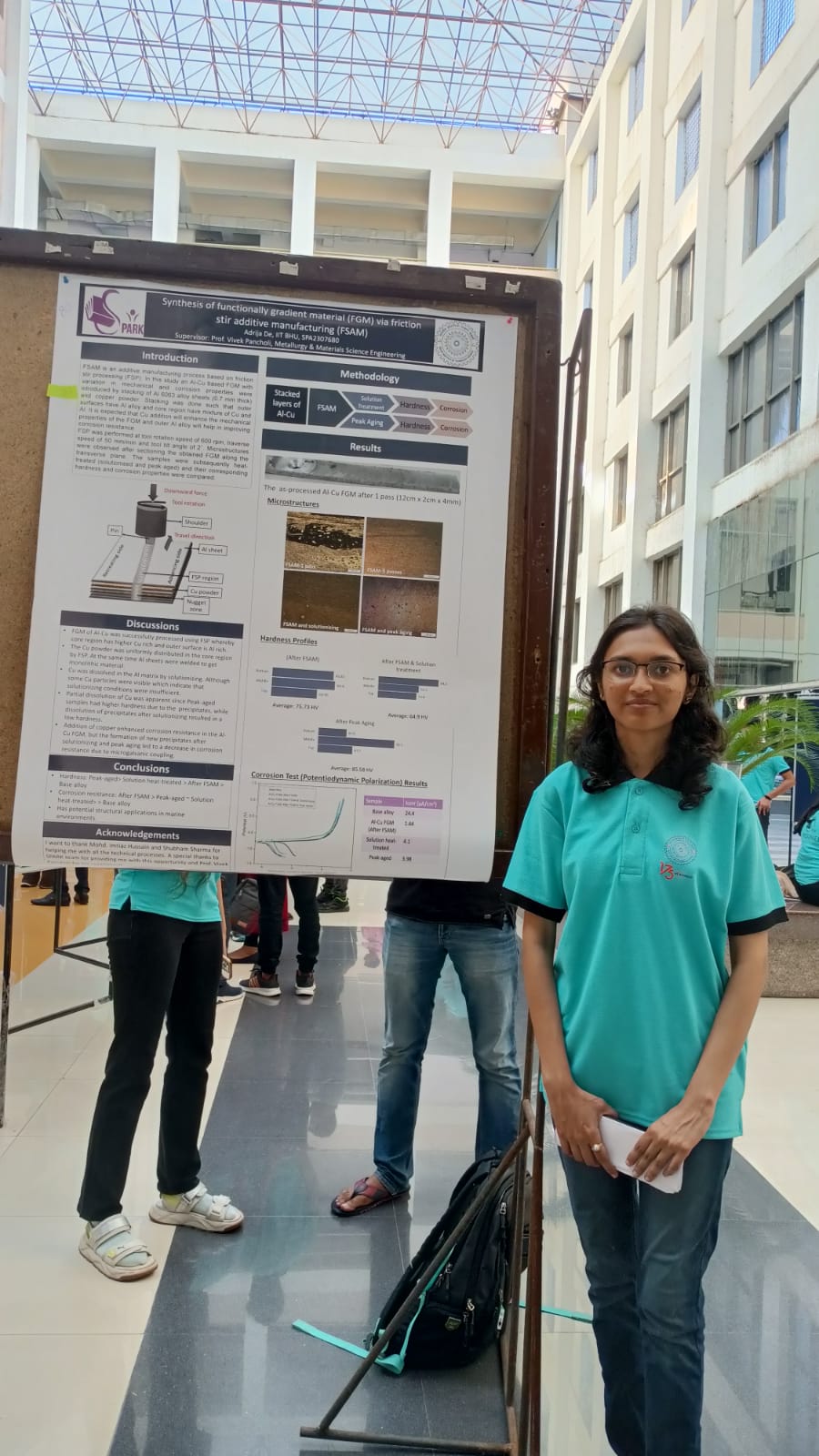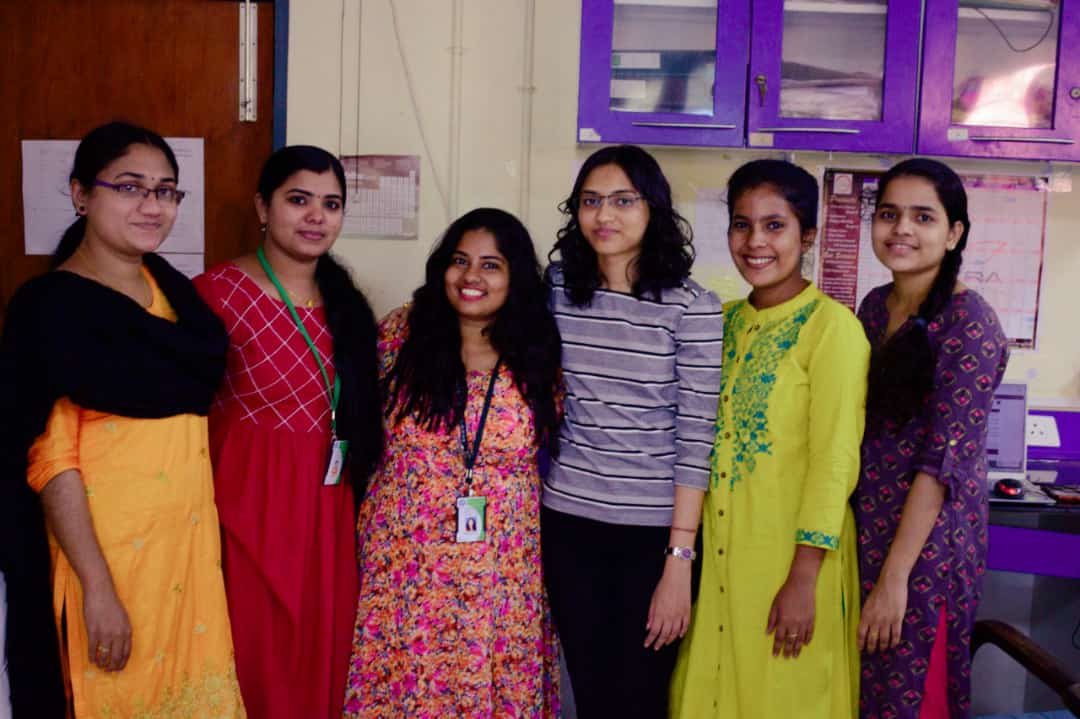Summer Internship’23
IIT Roorkee
IIT Roorkee
Council of Scientific & Industrial Research (CSIR)-NIIST, Trivandram, India 
Publication (Published on 28 December, 2023)
This paper is about hybrid aerogels which show thermochromism (change colour with change in humidity of the surrounding environment).
A paper titled ‘A Novel Photobioreactor for Carbon Dioxide Sequestration’ was presented at the VII International Conference on Sustainable Energy and Environmental Challenges (SEEC) held here at IIT-BHU, Varanasi, India in December 2022.
Summer Internship Project, CSIR-NIIST, Trivandram
This project consisted of two sub-projects: one experimental and the other computational.
Academic Project, Department of Mechanical Engineering, IIT-BHU
This project was supervised by Dr. Akhilendra Pratap Singh, Department of Mechanical Engineering, IIT-BHU. Global emissions of CO2 are increasing day by day, from 390 million tons in 2010 to 2.9 billion tons in 2020. Global green chemistry studies have proven greenhouse emissions to be reusable sources for energy production. Different methods have been investigated to capture CO2, the prime effluent, which include techniques like the anionic resin exchange method, MEA absorptive solutions and electrochemical conversion. Withstanding the fact that microalgae are poorly explored, their cultivation can take place independent of external conditions and also would convert solar energy more efficiently. They also stand in great advantage in comparison with higher plants; they do not require fertile soil, produce a wide range of substances, and can be used for different applications. Some of these species reproduce very fast, so these organisms present a remarkable self-renewing source of biomass and certain compounds. The amount of algal biomass produced will be critical in determining the overall economics of CO2 capture for the chosen method. This project puts forward a novel photobioreactor concept designed for the efficient utilisation of algae as a bioresource for energy production. The design was made to be potentially replicated at an industrial level. The bioreactor was designed using the AutoDesk Fusion360 software. The goal of the present study is to investigate the production of algal biomass in photobioreactors from an energy perspective and to understand the most important economic factors that impact the viability of microalgae for CO2 capture and reuse. The algae thus produced can be further employed in the production of biodiesel, biopolymers, feed, and medicines. The project is currently in the manufacturing stage as it was difficult to get the acrylic pipes and cultured micro-algae required.
B.Tech Project, Department of Metallurgical Engineering, IIT-BHU
This project is being supervised by Prof. Surya Deo Yadav, Department of Metallurgical Engineering at our University. Plastic deformation is a result of the generation of dislocations and their consequent interaction with solute atoms or other dislocations. Mapping different dislocation mechanisms can help us produce a flow stress curve, eliminating the need for time-consuming experiments. This project aims to model a flow-stress curve of Monel 400 alloy, having a composition of 64.7 wt% Ni and 31.96 wt% Cu, using the irreversible thermodynamics approach. The model takes into account the change in entropy due to different dislocation mechanisms and other related long-range and short-range interactions. The flow stress behaviour is modelled for two specimens of different grain sizes, each being deformed at five different temperatures and is validated by performing the appropriate experiments.
Research Internship Project, Metallurgical and Materials Engineering Department, IIT Roorkee
FSAM is an additive manufacturing process based on friction stir processing (FSP). In this technique, a rotating tool plunges into the material layers, generating enough heat due to friction and causing severe plastic deformation, enabling material flow and joining metal layers. In this study, an Al-Cu-based functionally gradient material (FGM) with variation in mechanical and corrosion properties was introduced by stacking Al 6063 alloy sheets (0.7 mm thick) and copper powder. Stacking was done such that outer surfaces have Al alloy and the core region has a mixture of Cu and Al. It is expected that Cu addition will enhance the mechanical properties of the FGM, and outer Al alloy will help in improving corrosion resistance. FSP was performed at tool rotation speed of 600 rpm, traverse speed of 50 mm/min and tool tilt angle of 2˚. Microstructures were observed after sectioning the obtained FGM along the transverse plane. The samples were subsequently heat-treated (solutionised and peak-aged), and their corresponding hardness and corrosion properties were compared. Cu was dissolved in the Al matrix by solutionising. However, some Cu particles were visible, which indicates that solutionising conditions were insufficient. Partial dissolution of Cu was apparent since peak-aged samples had higher hardness due to the precipitates, while the dissolution of precipitates after solutionising resulted in low hardness.
Summer Internship, National University of Singapore
Advances in Additive Manufacturing Techniques for Electrochemical Energy Storage I am currently writing a literature review on the above-mentioned topic under the supervision of Prof. Seeram Ramakrishna, NUS Singapore. The manuscript is prepared, and we will be submitting it in Batteries-MDPI Journal before August 30.